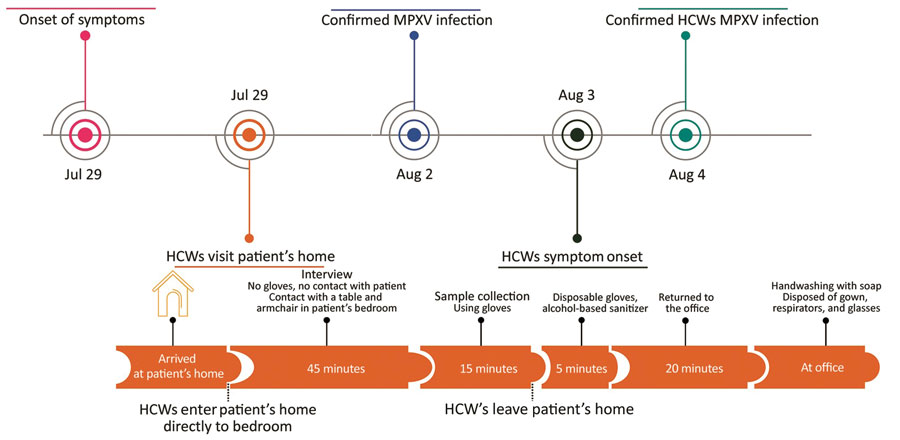Volume 28, Number 12—December 2022
Dispatch
Possible Occupational Infection of Healthcare Workers with Monkeypox Virus, Brazil
Figure 1

Figure 1. Timeline of monkeypox patient illness, HCW visit to the patient’s home, and subsequent HCW illness, Brazil, 2022. HCW, healthcare worker; MPXV, monkeypox virus.
Page created: September 23, 2022
Page updated: November 22, 2022
Page reviewed: November 22, 2022
The conclusions, findings, and opinions expressed by authors contributing to this journal do not necessarily reflect the official position of the U.S. Department of Health and Human Services, the Public Health Service, the Centers for Disease Control and Prevention, or the authors' affiliated institutions. Use of trade names is for identification only and does not imply endorsement by any of the groups named above.